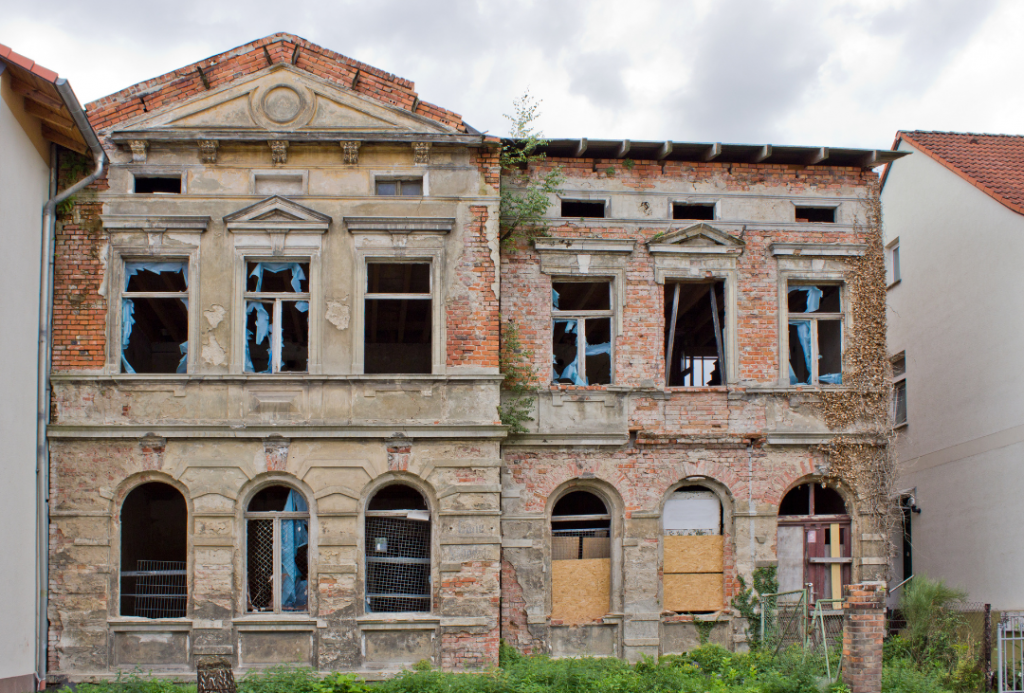
How to Get a Bridging Loan for a Listed Building Renovation
Renovating a listed building can be a rewarding but challenging project. These historic properties often come with strict planning regulations, higher renovation costs, and limited traditional mortgage options. If you’re looking to purchase or refurbish a listed building, a bridging loan could be the perfect short-term financing solution to keep your project on track.
In this guide, we’ll explore how bridging loans for listed buildings work, their benefits, key considerations, and how to secure the best deal for your renovation project.
What is a Bridging Loan for Listed Buildings?
A bridging loan is a short-term financing option designed to “bridge the gap” until a more permanent financial solution (such as a mortgage or property sale) is in place. For listed buildings, this type of loan can be used to:
- Purchase a listed property quickly
- Fund essential repairs and renovations
- Cover costs while securing long-term finance or selling the property
Bridging loans are particularly useful for Grade I, II, and II listed buildings* that may not meet standard mortgage criteria due to their condition or renovation requirements.
Types of Listed Buildings in the UK
Understanding your property’s listing category is crucial before applying for a loan:
- Grade I: Buildings of exceptional historical or architectural significance (~2.5% of listed buildings).
- Grade II*: Particularly important buildings with special interest (~5.5% of listed buildings).
- Grade II: Structures of national importance and special interest (~92% of listed buildings).
The more historically significant a building is, the more restrictions and challenges you’ll face in renovation.
Why Use a Bridging Loan for a Listed Building Renovation?
Listed properties come with unique challenges that make bridging finance a popular choice. Here’s why:
✅ Fast Access to Funds – Unlike traditional mortgages, bridging loans can be arranged in as little as 48 hours. This is crucial when buying a listed property at auction or dealing with urgent repairs.
✅ Flexible Loan Terms – Bridging loans typically last between 3 to 24 months, giving you time to complete renovations before refinancing.
✅ No Monthly Repayments Required – Many lenders allow interest to be rolled up, meaning you only repay the loan at the end of the term.
✅ Ideal for Unmortgageable Properties – If the building is deemed uninhabitable due to structural issues or lack of modern utilities, a bridging loan provides the funds needed to bring it up to standard.
✅ Supports Higher Renovation Costs – Listed building restorations often cost more due to specialist materials and conservation rules. Bridging loans provide the flexibility to cover these expenses.
✅ Auction Property Purchases – Many listed buildings are sold at auction, requiring quick funding that traditional mortgages can’t provide.
Key Considerations Before Applying
Before securing a bridging loan for a listed building renovation, it’s important to consider the following:
🔹 Grade of the Listed Building – Grade I buildings have stricter regulations than Grade II*, which may impact renovation costs and permissions.
🔹 Planning Permission & Conservation Rules – Ensure you have the required approvals from Historic England (or the relevant authority in Scotland, Wales, or Northern Ireland).
🔹 Higher Interest Rates – Bridging loans generally have higher monthly interest rates (0.45% – 1.5%) than traditional mortgages.
🔹 Exit Strategy – You need a clear plan to repay the loan, whether through selling the property or securing long-term finance.
🔹 Specialist Survey & Valuation – Lenders may require a specialist valuation due to the historic nature of the property.
🔹 Construction Costs & Insurance – Due to their historic nature, listed buildings often require specialist contractors and higher insurance premiums.
How to Secure a Bridging Loan for a Listed Property
To improve your chances of securing a bridging loan, follow these steps:
1. Work with a Specialist Broker
Not all lenders offer bridging loans for listed buildings. A specialist broker, like Sunrise Commercial Finance, can help you find lenders familiar with heritage properties.
2. Prepare a Detailed Renovation Plan
Lenders need reassurance that your project is viable. Include:
- Estimated costs
- Timelines
- Planning approvals
- Exit strategy (e.g., refinancing or sale)
3. Provide Proof of Income & Security
Lenders will require proof of income, assets, and additional security (such as another property) if needed.
4. Get a Specialist Valuation
A valuation from a surveyor experienced in listed properties will help satisfy lender requirements.
5. Apply & Secure Funds
Once approved, funds can be released within days, allowing you to proceed with your renovation.
Real-Life Case Study: Successful Listed Building Renovation with a Bridging Loan
Case Study: John and Sarah purchased a Grade II listed cottage in the countryside, which required extensive renovation, including a new roof and structural repairs. Traditional mortgage lenders were reluctant to finance the project due to the property’s initial uninhabitable condition.
Solution: They secured a bridging loan to cover the purchase and renovation costs. After restoring the property to mortgageable standards, they refinanced with a long-term mortgage, repaying the bridging loan in full.
Outcome: The property increased in value by 40% post-renovation, turning a significant profit while preserving an important historic home.
FAQs About Bridging Loans for Listed Buildings
Q: Can I get a bridging loan for a Grade I listed property?
A: Yes, but it may require additional approvals and higher renovation costs. Specialist lenders can provide funding with the right conservation plan.
Q: How much deposit do I need for a bridging loan?
A: Most lenders require at least 25-30% equity in the property.
Q: What are the typical interest rates for bridging loans on listed buildings?
A: Rates vary from 0.5% to 1.5% per month, depending on the lender and risk assessment.
Q: What happens if I can’t repay the bridging loan on time?
A: Late repayment may result in penalty fees or forced property sale, so it’s crucial to have a clear exit plan.
Final Thoughts: Is a Bridging Loan Right for Your Listed Building Renovation?
Bridging loans can be a lifeline for buyers and developers looking to restore a historic property. They provide fast, flexible funding that is often unavailable through traditional mortgage lenders. However, it’s essential to work with a specialist broker who understands the complexities of financing listed buildings.
At Sunrise Commercial Finance, we specialise in securing the best bridging loans for property renovations, including Grade I, II, and II listed buildings*. Contact us today to discuss your project and find the right funding solution for your needs.
For more information contact us for a fees free chat.
To keep informed of our latest property articles about all things property follow us on facebook
📞 Call us at 07939 091418
📧 Email: john@sunrisecommercial.co.uk
🌐 Visit: https://www.sunrisecommercial.co.uk/
#BridgingLoans #ListedBuildingFinance #HistoricPropertyLoans #PropertyRenovationFinance #UKBridgingLoans #HeritagePropertyFunding #SunriseCommercialFinance #PropertyInvestment #RenovationLoansUK
